I think that plants are just as confused as we are about the weather. I had three fungi come up in my lawn, in a place and time they have never appeared before. I am hearing stories of exotic plants behaving very strangely.
Many of our indigenous plants are also been behaving differently. I saw a number of bushes of Sweet Bursaria, Bursaria spinosa subsp. spinosa, flowering beautifully before Christmas.
 Sweet Bursaria flowers
Sweet Bursaria flowers
By late January and all through February these bushes were in seed when all the others were flowering with their fragrant, creamy-white, star-like flowers—such a bonus for the bees and butterflies.
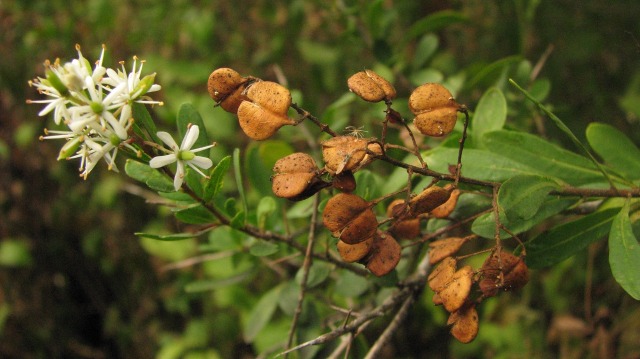 Sweet Bursaria with seeds
Sweet Bursaria with seeds
In coastal areas, it looked as if light snow had fallen, as our iconic Moonahs, Melaleuca lanceolata, were flowering so vigorously. They radiated white from their lovely, small bottlebrush flowers, again to the delight of the bees and birds.
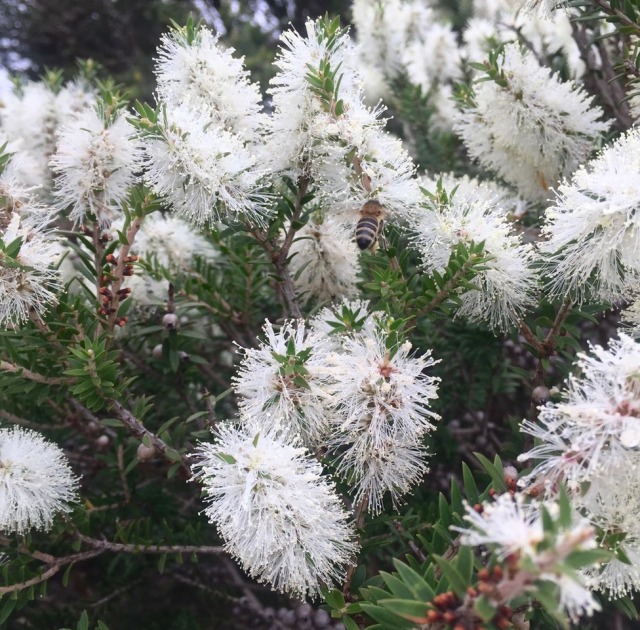 Moonah with bee
Moonah with bee
Seaberry Saltbush, Rhagodia cadolleana subsp. candolleana, also seems to have enjoyed the changed conditions, with its clusters of rich red seeds on the female plants being more prolific and luscious-looking than usual—but best left for the birds!
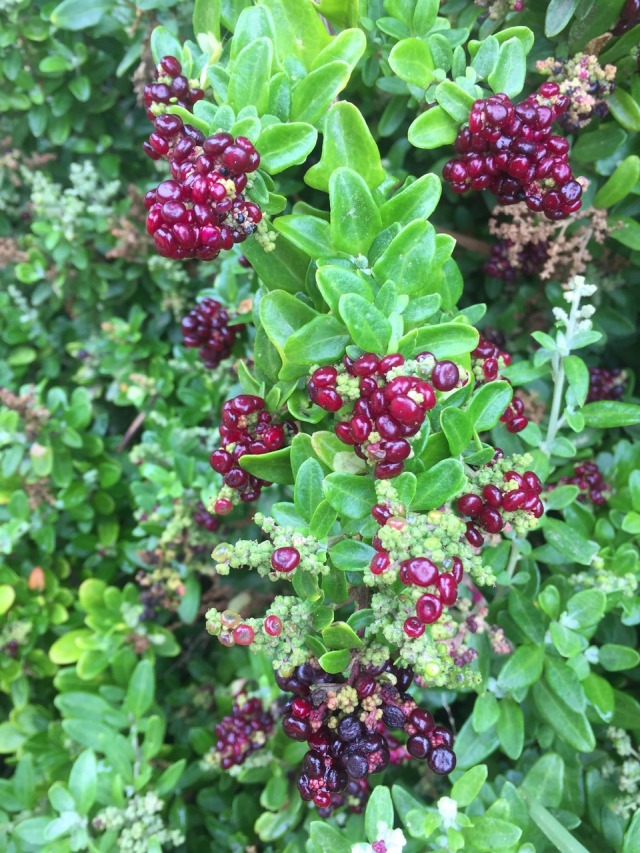 Seaberry Saltbush
Seaberry Saltbush
At this time of the year I am usually talking about techniques plants use to reduce water loss and protect their foliage from the heat and dryness. However everywhere fresh green shoots are the new norm. A plant like Large-leaf Bush-pea, Pultenaea daphnoides, is spreading rather than curling its leaves and Slender Velvet-bush, Lasiopetalum baueri, has shed its usual droopy summer look.
On Ted’s Track I expected to see a few spring leftovers but the only obvious flowers were a few Tall Lobelia, Lobelia gibbosa. Such a delight, though, with their one-sided spikes of vivid blue flowers with two curled and three spread petals.
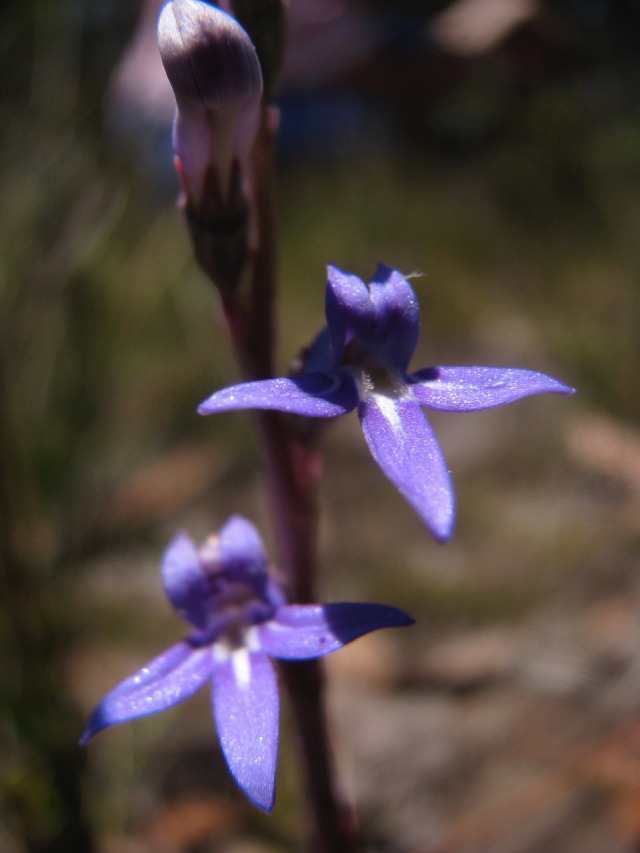 Tall Lobelia
Tall Lobelia
A closer look at the vegetation revealed tiny white pearls which were the white clustered flowers of Slender Dodder-laurel, Cassytha glabella forma disbar. This parasitic and normally winter/spring plant, is a relation of the better-known Coarse Dodder-laurel, Cassytha melantha, but its fine stems do not seem to harm other plants unlike the thicker Dodder-laurel.
 Slender Dodder-laurel
Slender Dodder-laurel
I also noticed that, as usual, our only banksia, Silver Banksia, B. marginata, was producing lovely, new, yellow cylindrical spikes, forming a nice contrast to the old gnarled cones.
 Banksia
Banksia
So where to find flowers? I chose my normal ‘go-to’ water areas. The Allen Noble Sanctuary is surrounded by a thick collar of the pink flowers of Slender Knotweed, Persicaria decipiens. This hardy, water-loving plant has slender flower spikes and stalkless, lance-shaped leaves with a dark blotch or spot near the centre.
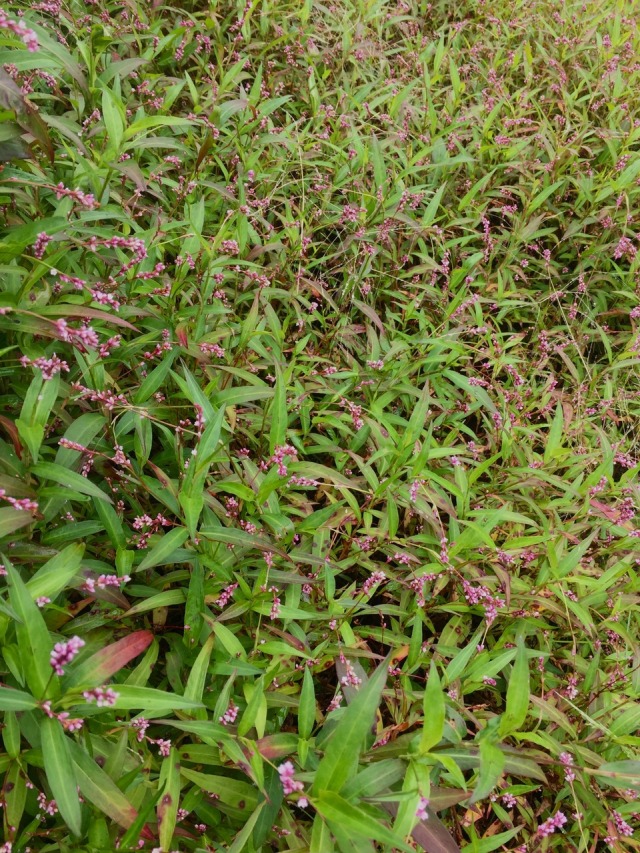 Slender Knotweed
Slender Knotweed
However, the ‘creme de la creme’ for this month I found creeping along the banks of the Painkalac Estuary, the delightful Creeping Monkey Flower, Thyridia repens. I find the delicate mauve and yellow flowers quite irresistible, more like butterflies than monkeys!
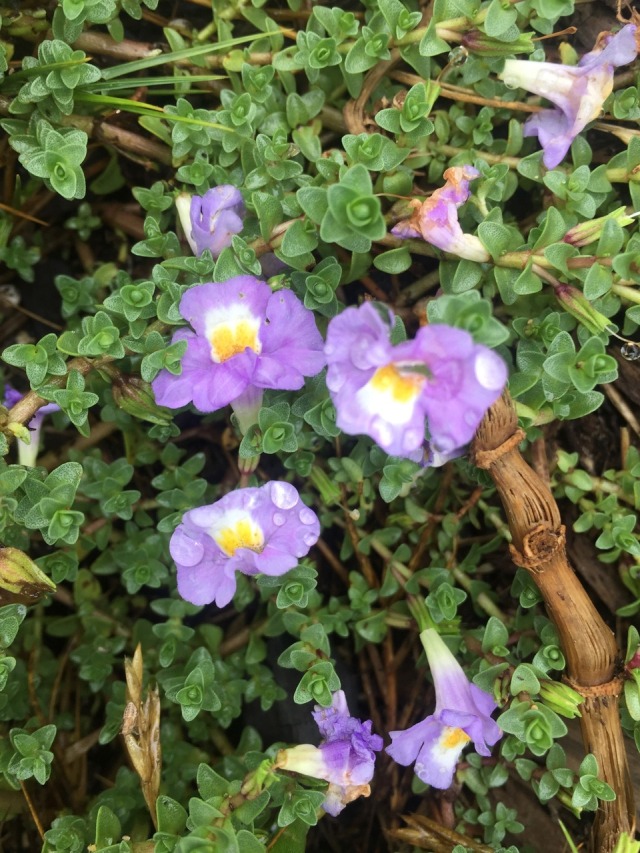 Creeping Monkey Flower
Creeping Monkey Flower
An optional extra was provided by the erect white, or pale pink flowers of Creeping Brookweed, Samolus repens var. repens.
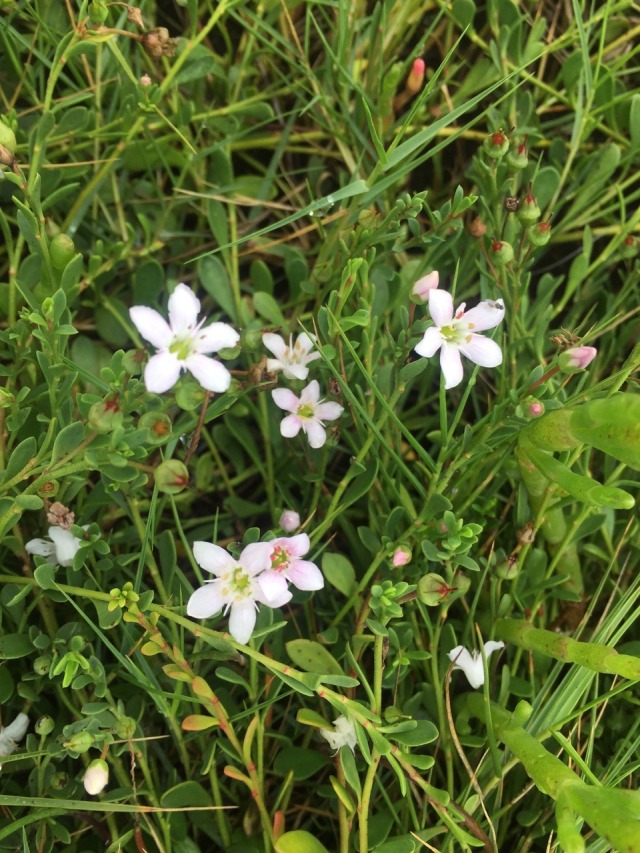 Creeping Brookweed
Creeping Brookweed
I understand that on the February Nature Ramble the Monkey Flower was not found on its usual place on the Anglesea River. However, they did find another species of lobelia, Angled Lobelia, L. Lanceps, a paler relative of the Tall Lobelia, and with the lower three petals being closer together, a bit like a fan.
 Angled Lobelia
Angled Lobelia
Be sure to carry your copy of Flowers of Anglesea and Aireys inlet, as who knows what there will be to see in March.
Ellinor Campbell